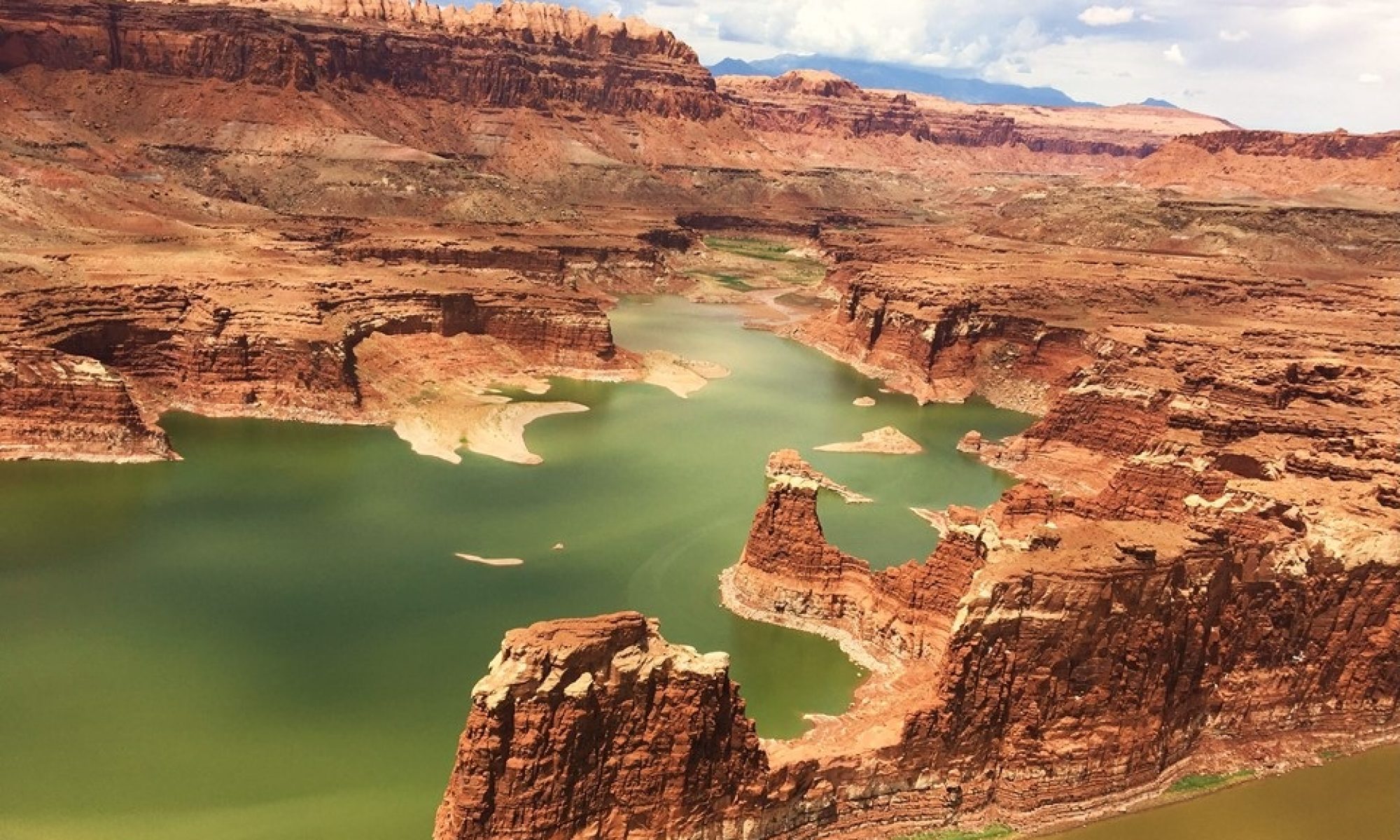January 23, 2010
I had the privilege of attending a fabric dying session with Nike of Nike Gallery. I once before wrote of Nike (see ). Nike has spent her career teaching native Africans the art of batik so that this art is never lost. Nike recently moved her gallery from her home to a new building that she designed and built at the second roundabout in Lekki. It is a huge 4 storey building where she can showcase her art and art of her peers. It was inspiring to just browse the building. Then it was out the back door to a large patio that had been set up with tables and pots of dye. Today Nike was going to teach us how to tie dye cloth (handkerchief, t-shirt and fabric). All the while she has 2 film crews following her around. One crew is from the USA doing a show for PBS. The other crew is Africa Magic, a local cable channel that showcases native TV shows and projects.
We started with 2 handkerchiefs’ each. Nike demonstrated several ways to fold the squares to get a desired shape or pattern, adding a rubber band or two. Then she dipped it into the dye pots and viola! What beautiful squares she had. Nike made it look so easy. So it was our turn. Here you have 25 people trying to be as creative as Nike and it was comedy. Some had more dye on them than on the handkerchief. Mine turned out a bit pastel which means I should have left them in the dye longer to soak in more color. We hung them to dry on the fence and it was onto the t-shirts. I used a razor blade fold to make mine and it turned out surprisingly well. I attempted a second shirt for Rocky using pleats and rubber bands. It looked black, then brown as it dried. I was going for navy or a deep indigo color. The next day I washed it in woollight and it turned indigo just as I wanted. This took us about 3 hours!
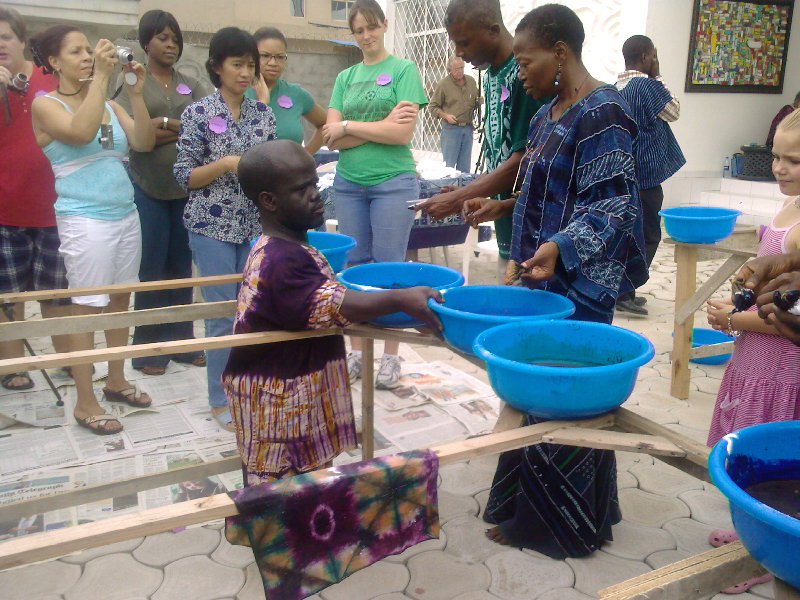 You can see the dye pots and a hankerchief; Nike is in the blue and she had several of her artists assisting her.
You can see the dye pots and a hankerchief; Nike is in the blue and she had several of her artists assisting her.
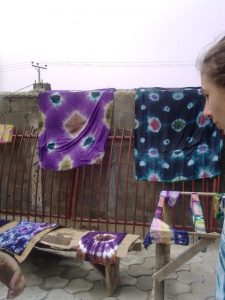 Some of our creations
Some of our creations
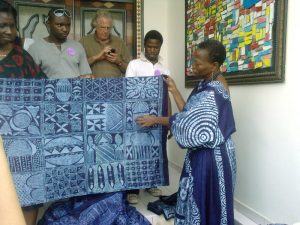 A batik Nike made.
A batik Nike made.
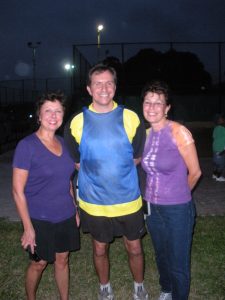 My new tie dye t-shirt!
My new tie dye t-shirt!
It was lunch break before we would learn about batik. Nike teaches batik with wax as well as batik with cassava paste. You need 100% cotton material that has been washed and dried. The wax (paraffin or bees wax) is melted and kept warming over a low flame. You then dip in a pointy foam cone and draw on the fabric. The wax, if is properly warm, soaks into the fabric front and back. When you have completed covering your fabric in wax of your design you then dip it in the dye(s) of your choice. Then you let the fabric dry. Once dry you boil it in a large pot to remove all the wax. Your fabric is white where the wax was and you have beautifully designed piece of fabric. We were able to paint with wax only a small piece of fabric. To do a large table cloth takes about 5 days to complete. Batik with cassava paste is done quite differently. Cassava flour is made into a paste (similar to a runny oatmeal). Using a birds feather, you dip it in the paste and paint your design on fabric. You then let it dry. Then for less than a minute you dip it in indigo dye. You then spread it out to dry. If stays in the dye longer than a minute the paste becomes too soft and comes off, ruining your design. So to get the color you want, you let the fabric dry and then dip it again (always less than a minute) repeating as many times as necessary to get the right color. With cassava paste your design is only on one side of the fabric as the paste lies on top the fabric and does not soak into the other side.
After this venture, I have great respect for the batik artists! And appreciate the time it takes to make the lovely African tablecloths that I have.
